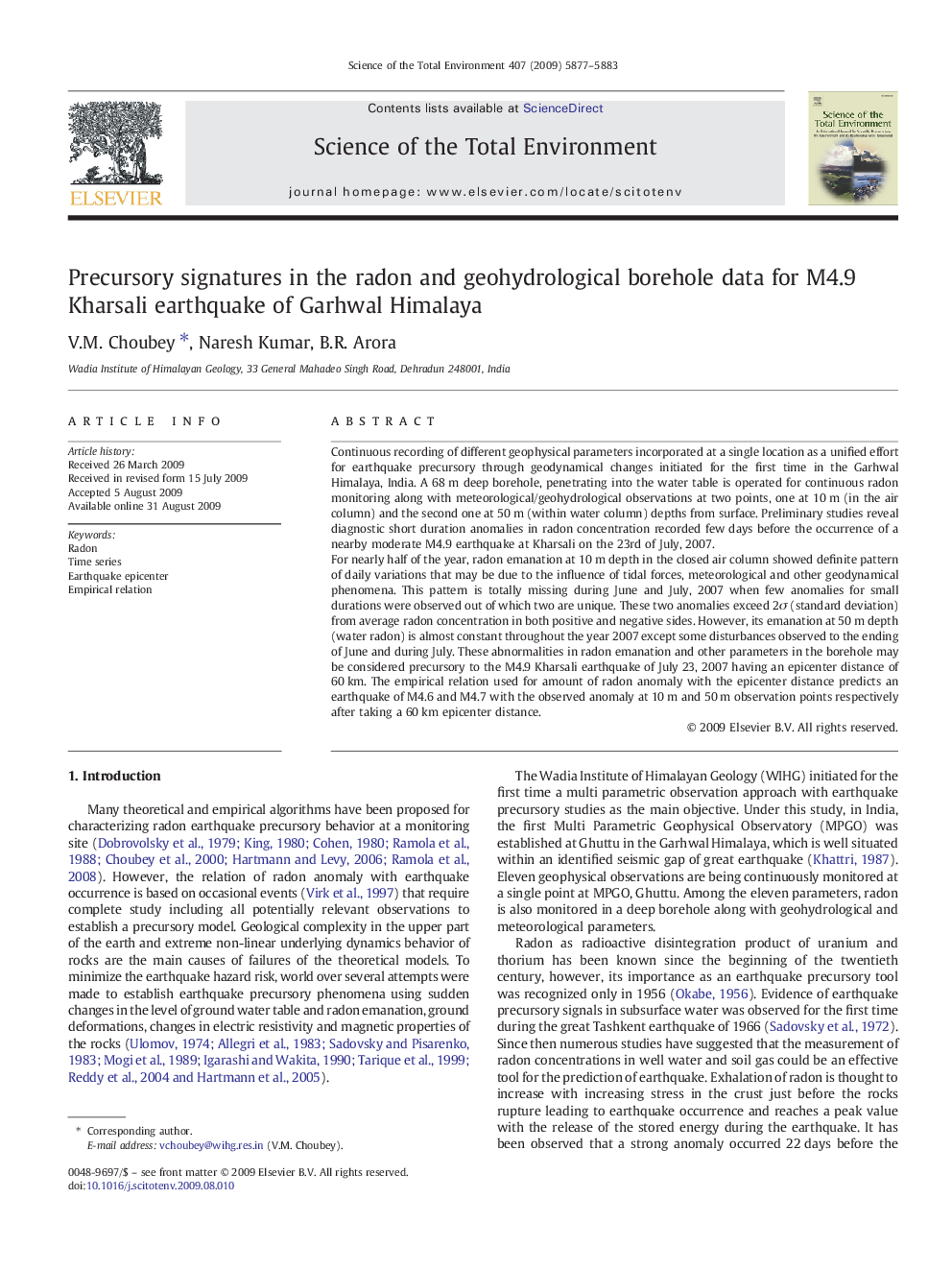| Article ID | Journal | Published Year | Pages | File Type |
|---|---|---|---|---|
| 4431163 | Science of The Total Environment | 2009 | 7 Pages |
Continuous recording of different geophysical parameters incorporated at a single location as a unified effort for earthquake precursory through geodynamical changes initiated for the first time in the Garhwal Himalaya, India. A 68 m deep borehole, penetrating into the water table is operated for continuous radon monitoring along with meteorological/geohydrological observations at two points, one at 10 m (in the air column) and the second one at 50 m (within water column) depths from surface. Preliminary studies reveal diagnostic short duration anomalies in radon concentration recorded few days before the occurrence of a nearby moderate M4.9 earthquake at Kharsali on the 23rd of July, 2007.For nearly half of the year, radon emanation at 10 m depth in the closed air column showed definite pattern of daily variations that may be due to the influence of tidal forces, meteorological and other geodynamical phenomena. This pattern is totally missing during June and July, 2007 when few anomalies for small durations were observed out of which two are unique. These two anomalies exceed 2σ (standard deviation) from average radon concentration in both positive and negative sides. However, its emanation at 50 m depth (water radon) is almost constant throughout the year 2007 except some disturbances observed to the ending of June and during July. These abnormalities in radon emanation and other parameters in the borehole may be considered precursory to the M4.9 Kharsali earthquake of July 23, 2007 having an epicenter distance of 60 km. The empirical relation used for amount of radon anomaly with the epicenter distance predicts an earthquake of M4.6 and M4.7 with the observed anomaly at 10 m and 50 m observation points respectively after taking a 60 km epicenter distance.
